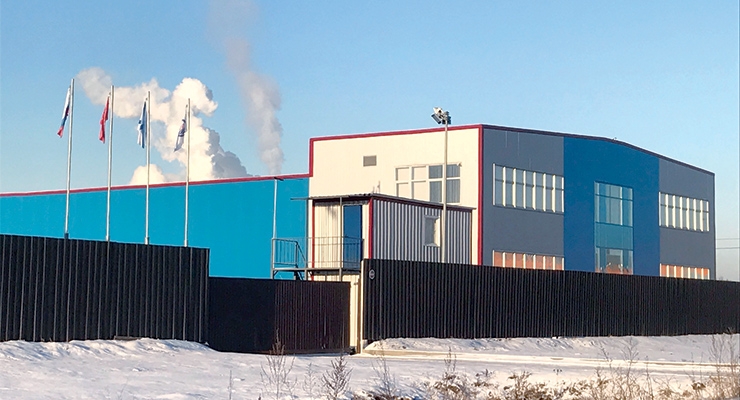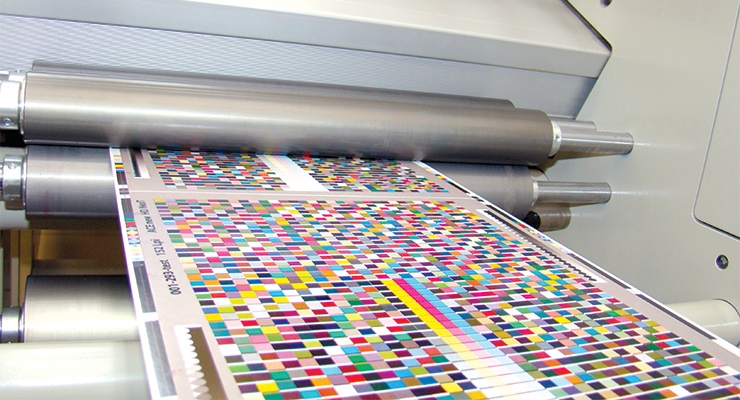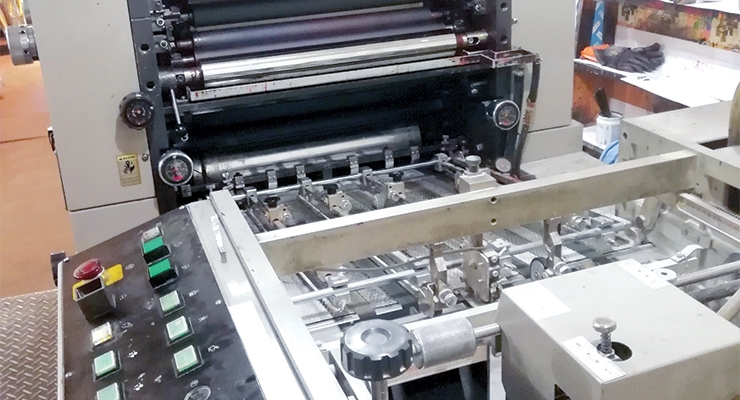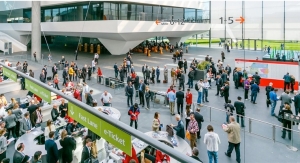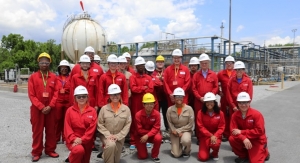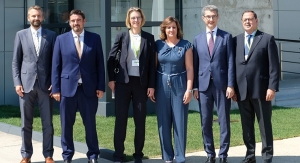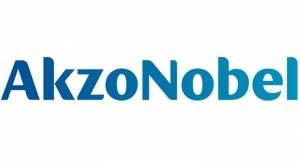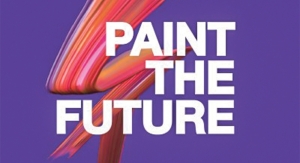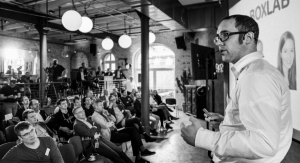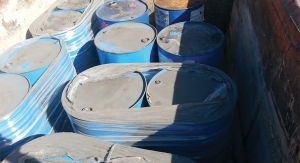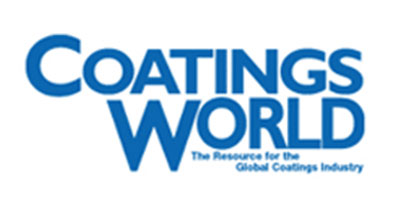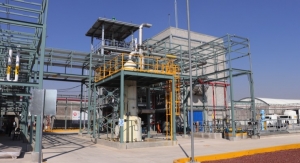Vladislav Vorotnikov, Russia Correspondent09.03.19
Russian coatings manufacturers have applied to the federal government seeking the introduction of higher import duties on printed inks and removal of restrictions that nearly drove some companies in the industry to the edge of bankruptcy.
Over the past few years, the Russian government obsessed over import-replacement.
The authorities put forth a lot of effort so that the country would become self-sufficient when it came to food, cars, a broad range of different equipment, machines, etc.
In many areas, import-replacement was a natural market response to the downward rally of the exchange rate of the Russian ruble, since all imported products in the country became much more expensive than before.
But in numerous cases, the authorities had been offering state aid to encourage market players to move away from import.
Yet not all industrial producers were treated the same way. Russian producers found themselves in a disadvantaged position as compared to importers.
There are five print inks manufacturers in the country and their joint designed production capacities are more than enough to fully meet the domestic demand, Anatoly Karpunin, general director of the Industrial and Trade Company Gangut, told local news outlet Chemistry and Business.
A few years ago, Gangut installed state-of-the-art equipment purchased in Switzerland and the UK with the production performance of 12,000 tons per year. However, the actual production in past years was limited to only 1,500 tons per year, making the average capacity utilization factor of only 12.5 percent, Karpunin estimated.
The company can double production to 25,000 tons of printed inks per year, which would be enough to meet around 50 percent of the overall demand in the Russian market, but the low capacity utilization factor is a challenge.
Currently, 82 percent of all printed inks on the domestic market are imported products, while Gangut’s stake is limited to only four percent.
The overall sales of printed inks of all types in the country ranged between 50,000 tons and 60,000 tons in previous years.
In 2015, there were some reports in the Russian press that the federal government could approve some aid to support at least one project for the production of printed inks in the country, in order to help the Central Bank to get rid of the complete import-dependence on inks for printing of the paper currency units of the Russian ruble.
In the absence of the quality Russian-origin products at the domestic market, Central Bank was forced to purchase inks in Germany and Switzerland.
It was suggested that at some point it could become a threat to the very stability of the national financial system. However, there is no information that any state aid has been allocated to anyone.
BASF and AkzoNobel were the first printed inks importers in the Russian market.
They were followed by Sun Chemical, Siegwerk, Torda, Flint amongst others, Karpunin said.
It is believed that the Soviet Union was self-sufficient on printed inks, but most of its plants were not able to withstand the open market conditions.
The domestic market’s problems began in 2010 when the Russian government abolished a 10 percent imported duty on printed inks.
The same thing has not been done regarding the raw materials necessary to manufacture printed inks.
Gangut has to import 99 percent of raw materials required in production – and, on most items, import is subjected to a 10 percent import duty, Karpunin said.
Most of these raw materials are not manufactured in Russia at all.
Those that could be sourced domestically are not comparable on price and quality to the imported raw materials, Karpunin said.
All in all, the existence of import duty on raw materials and its absence on ready-to-use imported inks means that the Russian regulations put importers in more preferential position as compared to domestic manufacturers, Karpunin added.
Technical difficulties
Russian companies have to use n-propanol and isopropanol as solvents since the use of ethanol in Russia is subjected to very strict control.
According to Karpunin, inks produced with ethanol could be imported to Russia, but the same products are not allowed to be manufactured in the country.
Ethanol is cheaper than other solvents and by using it Russian printed inks manufacturers could reduce the cost of raw materials by 25 percent to 32 percent, Karpunin said.
To apply ethanol, Russian companies must obtain a special license, which is rather expensive.
Ink companies in neighboring Belarus are allowed to use ethanol, however.
The demand by Russian inks producers for ethanol is estimated at 25,000 tons per year. Moreover, if its use in the industry is approved, that would be a win-win solution, as long as it would improve the business of the Russian ethanol manufacturers as well, Karpunin explained.
The years of working in heavy market conditions became a heavy burden for the Russian printed inks manufacturers, but nothing is lost yet.
In 2015, Torzhok Printed Inks Plant already appealed to the Russian government asking to reinstate a 10 percent import duty on printed inks. The government refused to do that and the plant went bankrupt shortly after.
At that time, some local news outlets in Russia reported that the import duty was not increased because of the strong resistance of the Russian printed products industry.
Some concerns were raised that the increased import duty could simply put an additional burden upon the Russian publishing houses, newspapers and magazines.
Torzhok Printed Inks Plant resumed operations under a new name in 2017, manufacturing 1,500 tons of offset ink with the total designed production capacity of 30,000 tons.
According to Karpunin, the positive sign was that the new company was able to establish export to Kazakhstan, Belarus, Uzbekistan and Armenia – and harbored plans to expand export supplies even further.
Russian ink producers believe that limiting import is the only way to move closer to self-sufficiency on printed inks.
According to Karpunin, so far not even a single non-Russian company has built a full-cycle production in the country, simply because it is cheaper to import inks. On the other hand, Russian companies expressed their readiness to increase their production capacities.
The proposal to raise import duties and to allow the Russian ink manufacturers to use ethanol has been filed to the Russian Economy Development Ministry by the Russian association of coatings producers Centrlack.
It is estimated that making the competitive terms equal for all market participants, the government could give a powerful impetus to the growth in the industry.
In theory, Russian printed inks manufacturers could expand their production to meet the domestic demand in two or three years, according to Karpunin.
After that, the industry could begin developing export supplies. It is commonly believed that the Russian companies could expand their presence on the post-Soviet space.
Centrlack believes that tariff regulation in Russia is not contributing to the development of industrial coating production in Russia, according to company president Gennady Averyanov.
For example, there is an absence of import duties on printed inks, while the European Union set a 6.5 percent duty and the U.S. set 10 percent to 15 percent duty on these products.
It is possible that this tariff policy was necessary back in the 1990s, but today, when localized capacities of printed inks production have been established in Russia, it is better to stimulate the increase in production in Russia, Averyanov said.
The appeal to change game rules has been submitted to the Russian government and it is currently under consideration of several Ministries, Averyanov said.
Additionally, Centrack also asks to simplify the use of ethanol in the printed inks industry, since it is nearly three times cheaper compared to other solvents, Averyanov noted.
All in all, this makes the competitive terms for Russian companies and foreign producers, including those with the localized in Russia capacities uneven, Averyanov said.
If approved, the proposed measures would let the industry to boost the capacity utilization factor to 70 percent or 80 percent in three years, according to manufacturers, Averyanov said. Moreover, one rationale behind the submitted proposals is that they could expand the export potential of the Russian printed inks industry and let the local companies to successfully compete in the foreign markets as well.
Over the past few years, the Russian government obsessed over import-replacement.
The authorities put forth a lot of effort so that the country would become self-sufficient when it came to food, cars, a broad range of different equipment, machines, etc.
In many areas, import-replacement was a natural market response to the downward rally of the exchange rate of the Russian ruble, since all imported products in the country became much more expensive than before.
But in numerous cases, the authorities had been offering state aid to encourage market players to move away from import.
Yet not all industrial producers were treated the same way. Russian producers found themselves in a disadvantaged position as compared to importers.
There are five print inks manufacturers in the country and their joint designed production capacities are more than enough to fully meet the domestic demand, Anatoly Karpunin, general director of the Industrial and Trade Company Gangut, told local news outlet Chemistry and Business.
A few years ago, Gangut installed state-of-the-art equipment purchased in Switzerland and the UK with the production performance of 12,000 tons per year. However, the actual production in past years was limited to only 1,500 tons per year, making the average capacity utilization factor of only 12.5 percent, Karpunin estimated.
The company can double production to 25,000 tons of printed inks per year, which would be enough to meet around 50 percent of the overall demand in the Russian market, but the low capacity utilization factor is a challenge.
Currently, 82 percent of all printed inks on the domestic market are imported products, while Gangut’s stake is limited to only four percent.
The overall sales of printed inks of all types in the country ranged between 50,000 tons and 60,000 tons in previous years.
In 2015, there were some reports in the Russian press that the federal government could approve some aid to support at least one project for the production of printed inks in the country, in order to help the Central Bank to get rid of the complete import-dependence on inks for printing of the paper currency units of the Russian ruble.
In the absence of the quality Russian-origin products at the domestic market, Central Bank was forced to purchase inks in Germany and Switzerland.
It was suggested that at some point it could become a threat to the very stability of the national financial system. However, there is no information that any state aid has been allocated to anyone.
BASF and AkzoNobel were the first printed inks importers in the Russian market.
They were followed by Sun Chemical, Siegwerk, Torda, Flint amongst others, Karpunin said.
It is believed that the Soviet Union was self-sufficient on printed inks, but most of its plants were not able to withstand the open market conditions.
The domestic market’s problems began in 2010 when the Russian government abolished a 10 percent imported duty on printed inks.
The same thing has not been done regarding the raw materials necessary to manufacture printed inks.
Gangut has to import 99 percent of raw materials required in production – and, on most items, import is subjected to a 10 percent import duty, Karpunin said.
Most of these raw materials are not manufactured in Russia at all.
Those that could be sourced domestically are not comparable on price and quality to the imported raw materials, Karpunin said.
All in all, the existence of import duty on raw materials and its absence on ready-to-use imported inks means that the Russian regulations put importers in more preferential position as compared to domestic manufacturers, Karpunin added.
Technical difficulties
Russian companies have to use n-propanol and isopropanol as solvents since the use of ethanol in Russia is subjected to very strict control.
According to Karpunin, inks produced with ethanol could be imported to Russia, but the same products are not allowed to be manufactured in the country.
Ethanol is cheaper than other solvents and by using it Russian printed inks manufacturers could reduce the cost of raw materials by 25 percent to 32 percent, Karpunin said.
To apply ethanol, Russian companies must obtain a special license, which is rather expensive.
Ink companies in neighboring Belarus are allowed to use ethanol, however.
The demand by Russian inks producers for ethanol is estimated at 25,000 tons per year. Moreover, if its use in the industry is approved, that would be a win-win solution, as long as it would improve the business of the Russian ethanol manufacturers as well, Karpunin explained.
The years of working in heavy market conditions became a heavy burden for the Russian printed inks manufacturers, but nothing is lost yet.
In 2015, Torzhok Printed Inks Plant already appealed to the Russian government asking to reinstate a 10 percent import duty on printed inks. The government refused to do that and the plant went bankrupt shortly after.
At that time, some local news outlets in Russia reported that the import duty was not increased because of the strong resistance of the Russian printed products industry.
Some concerns were raised that the increased import duty could simply put an additional burden upon the Russian publishing houses, newspapers and magazines.
Torzhok Printed Inks Plant resumed operations under a new name in 2017, manufacturing 1,500 tons of offset ink with the total designed production capacity of 30,000 tons.
According to Karpunin, the positive sign was that the new company was able to establish export to Kazakhstan, Belarus, Uzbekistan and Armenia – and harbored plans to expand export supplies even further.
Russian ink producers believe that limiting import is the only way to move closer to self-sufficiency on printed inks.
According to Karpunin, so far not even a single non-Russian company has built a full-cycle production in the country, simply because it is cheaper to import inks. On the other hand, Russian companies expressed their readiness to increase their production capacities.
The proposal to raise import duties and to allow the Russian ink manufacturers to use ethanol has been filed to the Russian Economy Development Ministry by the Russian association of coatings producers Centrlack.
It is estimated that making the competitive terms equal for all market participants, the government could give a powerful impetus to the growth in the industry.
In theory, Russian printed inks manufacturers could expand their production to meet the domestic demand in two or three years, according to Karpunin.
After that, the industry could begin developing export supplies. It is commonly believed that the Russian companies could expand their presence on the post-Soviet space.
Centrlack believes that tariff regulation in Russia is not contributing to the development of industrial coating production in Russia, according to company president Gennady Averyanov.
For example, there is an absence of import duties on printed inks, while the European Union set a 6.5 percent duty and the U.S. set 10 percent to 15 percent duty on these products.
It is possible that this tariff policy was necessary back in the 1990s, but today, when localized capacities of printed inks production have been established in Russia, it is better to stimulate the increase in production in Russia, Averyanov said.
The appeal to change game rules has been submitted to the Russian government and it is currently under consideration of several Ministries, Averyanov said.
Additionally, Centrack also asks to simplify the use of ethanol in the printed inks industry, since it is nearly three times cheaper compared to other solvents, Averyanov noted.
All in all, this makes the competitive terms for Russian companies and foreign producers, including those with the localized in Russia capacities uneven, Averyanov said.
If approved, the proposed measures would let the industry to boost the capacity utilization factor to 70 percent or 80 percent in three years, according to manufacturers, Averyanov said. Moreover, one rationale behind the submitted proposals is that they could expand the export potential of the Russian printed inks industry and let the local companies to successfully compete in the foreign markets as well.

